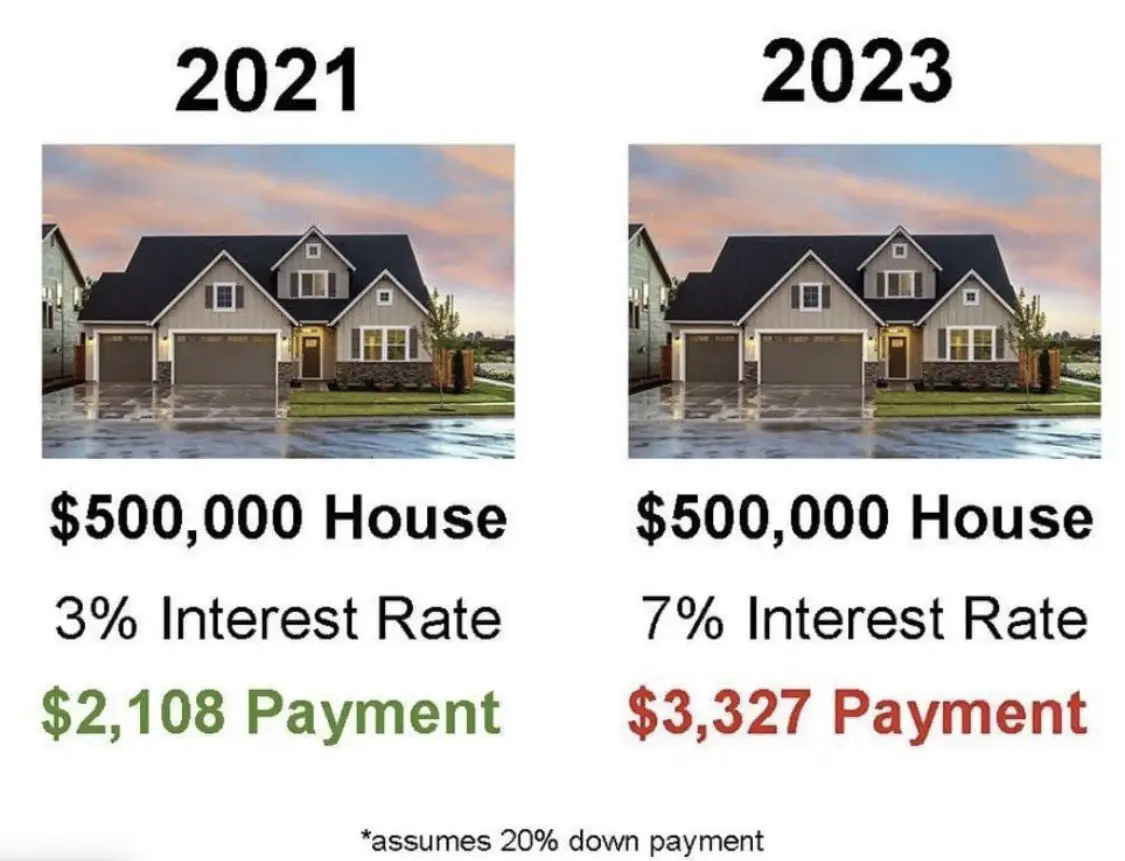If you’ve ever wondered why your expenses are perpetually rising, making life increasingly costly, you’re not alone. Many grapple with the financial strain of escalating costs in virtually every aspect of daily living—from housing and healthcare to education and beyond. While it’s tempting to point fingers at various culprits, one economic factor is a primary driver behind this trend. In this article, we’ll unpack the complexities of living expenses and zero in on the one thing that’s quietly eroding your purchasing power.
The Rising Cost of Living
While it’s easy to blame various factors for this upward price trend across almost all products and services, one economic element stands out as a primary driver: inflation. But what is the cause of inflation? The growth in the money supply relative to the growth of actual output in the economy, often referred to as monetary inflation, makes your life more expensive. Keep reading for a deep dive into the complexities of the cost of living and explore how inflation significantly makes your life more expensive.
What is the Cost of Living?
The cost of living refers to the money needed to sustain a certain standard of living, including all the goods and services you consume in a given period. This includes everything from your rent or mortgage to the food you eat, the car you drive, and the healthcare you receive. Various factors influence living expenses, each contributing to the overall cost of living. Let’s look at some of the major categories.
Housing: The Roof Over Your Head
For most people, housing is the most significant monthly expense. Whether renting an apartment or paying a mortgage, housing has steadily risen, particularly in urban areas. Factors like limited supply, increased demand, and zoning restrictions contribute to this upward trend. Recent higher interest rates have also made buying a home much more expensive than it has been for many years.

Healthcare: A Costly Necessity
Healthcare costs have been skyrocketing, especially in countries without universal healthcare. Even with insurance, the out-of-pocket expenses for medical treatments can be substantial.
Education: Investing in the Future at a Price
The cost of education, notably higher education, has been on an upward trajectory for years. This has led to increased student loan debt, which has become a long-term financial burden for many. In the US, the unlimited student loans funded by the government have made it too easy to get student loans at any amount and for colleges to keep raising tuition costs. The money supply for student loans has grown to provide an endless supply of students to universities.
Energy and Transportation: Getting Around Isn’t Cheap
The cost of energy and transportation is another significant factor. Fluctuations in oil prices can lead to higher costs at the gas pump and increased utility bills, affecting your monthly budget. OPEC+ cuts to oil production keep global oil production lower than global oil demand. The worldwide oil demand has been increasing faster than the production of supply. The sanctions against many oil-producing countries have also lowered the oil supply to Western countries.[1]
Consumer Debt: The Hidden Expense
High consumer debt levels, including credit cards and personal loans, can lead to significant interest payments, further straining your finances. Credit card debt in the US surpassed $1 trillion for the first time in the second quarter, thanks to inflation and rising interest rates. Credit card balances increased by $45 billion, a 4.6% quarterly increase, and now at $1.03 trillion. Auto loan balances increased by $20 billion, continuing the upward trajectory since 2011. Other balances, which include retail cards and other consumer loans, increased by $15 billion. All this currency credit demand chasing a fixed amount of goods and services causes inflationary pressures on production and supply.[2] [3]
The #1 Economic Factor: Inflation
While all these factors contribute to the cost of living, inflation is often the underlying force that drives these costs higher over time.
What is Inflation?
Inflation is the rate at which the general level of prices for goods and services rises, eroding purchasing power. In other words, as inflation increases, each dollar you own buys a smaller percentage of a good or service.
Fiat Currency as Credit, Not “Money” in the Traditional Sense
Fiat currency is often described as “credit” rather than “money” in the traditional sense because a physical commodity like gold or silver does not back it. Instead, its value is derived from people’s trust and confidence in the issuing government’s ability to maintain that value. When you hold a fiat currency, you have a form of IOU or credit note from the government. This contrasts commodity money, where the value is intrinsic to the material (e.g., a gold coin).
Designed to Lose Value Through Inflation
Fiat currencies are generally designed to lose value over time through a process known as inflation. This is not an accident but a feature of modern economic systems for several reasons:
Encouraging Spending and Investment: A currency that loses value over time discourages hoarding and encourages spending and investment, which in turn helps to drive economic activity.
Debt Management: Governments often have large debts. Inflation can reduce the actual value of this debt, making it easier to manage.
Monetary Policy: Central banks use inflation targeting to stabilize the economy. A moderate level of inflation is often seen as a sign of a healthy, growing economy.
Wage and Price Flexibility: Employers are likelier to lay off workers than to cut salaries in a deflationary environment. A moderate level of inflation allows for “real” wage cuts, even if “nominal” wages stay the same, providing more flexibility in economic adjustments.
Avoiding Deflation: Deflation, or the reduction of the general price level in an economy, can lead to a deflationary spiral, where the expectation of falling prices leads to delayed spending and investment, leading to further price declines and economic stagnation.
While inflation erodes the purchasing power of money, it’s worth noting that deflation (the opposite of inflation) is generally considered to be more damaging to an economy. This is why central banks often have inflation targets but not deflation targets.
Fiat currency can be viewed as a form of credit issued by a government, and it is generally designed to lose value over time through inflation. This is a tool and a byproduct of how modern economies are structured.
How Does Inflation Affect You?
Inflation impacts you by reducing the value of your money, making it more expensive to buy the things you need and want. It can also affect interest rates, investment returns, and employment prospects.
Types of Inflation: Demand-Pull, Cost-Push, and Monetary
There are several types of inflation, each with different causes. Demand-pull inflation occurs when demand outstrips supply. Cost-push inflation happens when the costs to produce goods and services increase. Monetary inflation is due to an oversupply of money in the economy, often caused by central banks.
The Role of Central Banks in Inflation
Central banks like the Federal Reserve in the US have a significant role in controlling inflation through monetary policy. Adjusting interest rates and using other financial tools can stimulate economic growth or cool down an overheating economy.
The Feedback Loop: How Expectations Drive Inflation Further
Expectations of future inflation can become self-fulfilling prophecies. If people expect higher prices, they are more likely to buy now rather than later, increasing demand and prices.
How to Protect Yourself from Rising Costs
Budgeting and Financial Planning
One of the best ways to combat rising costs is through meticulous budgeting and financial planning. Keep track of your income and expenses, and you can look for ways to save. Allocate your capital for high-value purchases.
Investing as a Hedge Against Inflation
Investments like stocks and real estate often serve as good hedges against inflation. They can provide returns that outpace inflation, helping to preserve your purchasing power.
Navigating the Inflationary Landscape
While various factors influence the cost of living, understanding the role of inflation can help you better prepare for future expenses. By budgeting wisely and investing smartly, you can mitigate the impact of rising costs on your life.
Key Takeaways
- Escalating Living Costs: The financial burden of maintaining a particular lifestyle increases due to various economic factors.
- Essential Expenditures: Vital outlays like shelter, medical care, educational pursuits, mobility, and consumer liabilities are all on an upward trajectory.
- Pervasive Price Growth: Inflation, the ubiquitous rise in the cost of goods and services, is the principal economic catalyst behind escalating living costs.
- Monetary Policy’s Influence: Central banking institutions powerfully shape inflation through interest rate adjustments and other financial mechanisms.
- Anticipatory Behavior: Public sentiment about future inflation can exacerbate the issue, creating a self-perpetuating cycle of price growth.
- Financial Safeguards: Prudent fiscal planning and strategic asset allocation can serve as bulwarks against the erosive effects of inflation on your buying power.
Conclusion
Navigating the labyrinth of ever-increasing living costs requires a nuanced understanding of the economic forces, chiefly inflation. Adopting meticulous financial stewardship and making informed investment choices can fortify your economic resilience against the relentless tide of rising expenses. By understanding the factors that contribute to the rising cost of living, particularly the role of inflation, you can take steps to protect your financial future.
